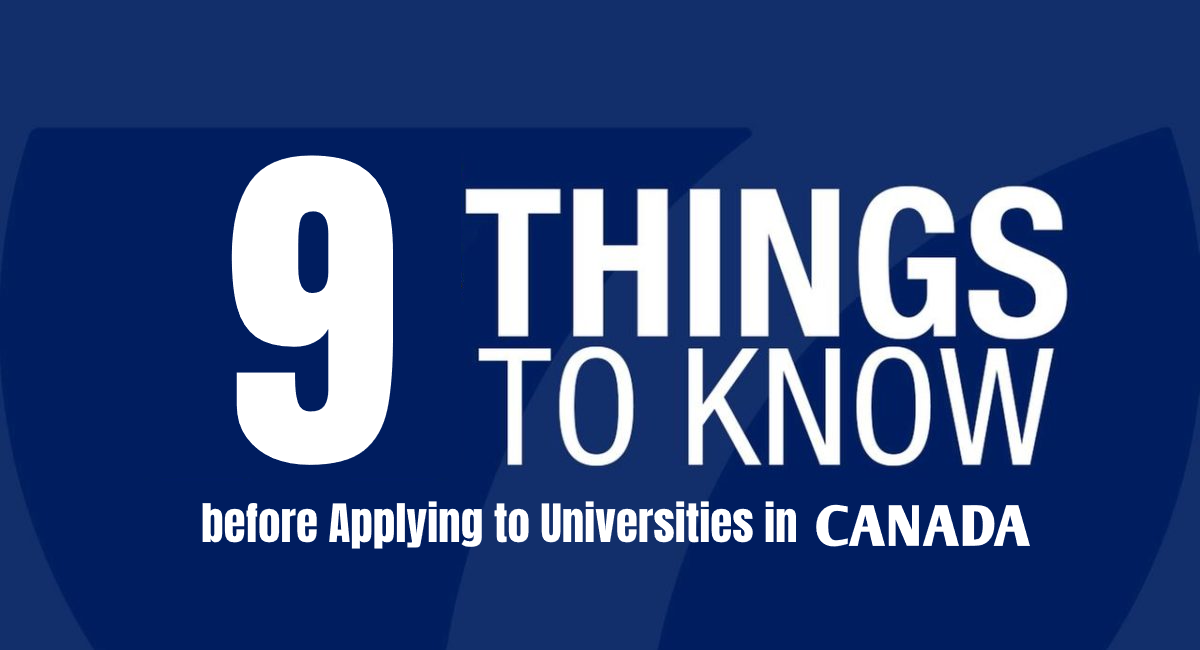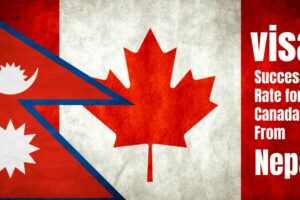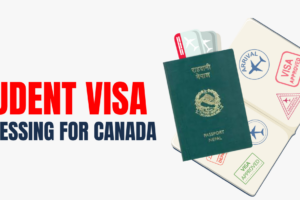9 Things You Should Know Before Applying for Universities in Canada

Discover vital insights for Canadian university applications! Explore the essential tips and guidance in our guide – Your key to a successful admission process.
If you are looking for continuing your higher education in a foreign country, then Canada can be among your choices.
Canada is the second largest country in the world by land area. It is a multicultural country and one of the most preferred destinations among international students.
But, before applying to a university in Canada there are numerous things that you need to be mindful of. Before finalizing your decision to study in Canada, there are a few things you need to know:
Also read; Top 10 Consultancies for Canada studies
Rankings
According to Overall Best Countries Ranking by www.usnews.com Canada is ranked as number 1 country in the world in 2021 in terms of educational attainment, life expectancy, national income and general quality of life, among other things.
It is also the safest place to live and is considered best place to live for immigrants from around the world. In Canada you can experience a high standard of living and study in world ranked universities with best teaching quality.
30 Canadian Universities are ranked among the top 300 Universities in the world which makes the Canadian higher education among best in the world.
The Cost of Study
Canadian education is affordable, and Canada boasts itself for having some of the lowest tuition fees in universities when compared to other English-speaking countries. However, the cost of study will depend on the university and course you choose to study. Common courses like Arts, Humanities etc. will be slightly cheaper than the courses like Science and Engineering. However, MBA programs may be quite expensive in Canada like other countries. The average tuition fees are:
| Type of Program | Average annual tuition fees per year (CAD) |
| Undergraduate | $13,000 – $20,000 |
| Postgraduate | $17,000 – $25,000 |
| Doctoral | $7,000 – $15,000 |
| MBA | $30,000 – $40,000 |
Finding the right College
Finding a right course and college for your further study is never an easy task. You need to consider several things before coming to a conclusion. You also need to remember that reputed universities are not necessarily going to be a better for you.
Consider choosing university which provides quality education, has better review of your selected program and is affordable for you. Also, you always need to choose colleges which are listed in the Designated Learning Institute (DLI)
list to get a study permit in Canada. A designated learning institution is a school approved by a provincial or territorial government to host international students.
Scholarships
While studying in Canada is affordable than many countries, it will be even more affordable if you get some scholarships. And the best part is there are many scholarships available for international students in Canada. Below are different types of scholarships available to international students in Canada:
Merit based Scholarship:
Many universities and colleges in Canada provide international student with these types of scholarships which are based on their previous academic result.
Student’s having high grades, achievements in sports, arts etc. are considered for these types of scholarships.
Government funded Scholarships:
Every year Canadian government provides various types of scholarships to international students to study in Canada to both undergraduate and graduate students. Some of these scholarships may also cover all your tuition fees and provide you additional allowances. You can visit www.educanada.ca to know more about the available scholarships and the requirements.
Scholarships by University/College:
Almost all of the universities and colleges in Canada provide students with some kind of scholarships or bursaries. The requirements may be varied between the institutions; thus you always need to check with the education provider before enrolling.
Private Funded Scholarships:
Many private organizations and donors who are based in Canada provide scholarships to international students.
But, usually these types of scholarships are targeted to a certain area of study and may not be available to most common courses. Thus, always check with your education provider if you may be eligible for these types of scholarships.
Intakes
There are three intakes for international students in Canada which are Fall intake, Winter Intake and Summer Intake.
Fall intake is the primary intake and starts in September where universities offer all the courses.
The secondary intake is Winter intake which starts in January, and you can also get a large number of courses in this intake.
Whereas, the summer intake which starts in May will have less number of courses available and not all universities offer the courses.
Meet the visa requirements
After you are accepted to study at a Designated Learning Institute (DLI) in a Canada you need to obtain a Study Permit to go to the country and start your study. You will need to submit following documents to apply for Study permit:
- Academic Certificates
- Test Scores
- Letter of Explanation
- Passport
- Proof of funds (bank balance or bank loan, source of income and property)
- Relationship verification certificate with sponsors
- Police report
- Medical report (if required)
- Supporting documents (if any)
Student Work Right
As an international student in Canada, you can work up to 20 hours per week on or off campus and can work full time during scheduled break.
You don’t need to apply for separate work permit if you are on a student visa at a designated learning institute(DLI).
Working while you are studying will help you earn some bucks to support your expenses in Canada.
You can also gain valuable work experience along with meeting new people and make connections which can eventually help you in your career ahead.
Climate
Yes, you’ve heard it right! Canada is cold. But, not all parts of Canada are cold and it has diverse climate.
Canada is a huge country and part of its territory includes the North Pole, thus the northern part of Canada is very cold which can get up to -40 degree Celsius and it is a very less populated area.
While the southern part has moderate temperature where we can see 4 seasons round the year and most of the people live in this part of Canada.
Post-Graduation Work Permit
International students who complete their higher studies in Canada are eligible for the Post-Graduation Work Permit (PGWP) in Canada to gain valuable Canadian work experience after they complete their studies.
However, the duration of PGWP depends upon the duration of your completed program and the length of PGWP ranges from minimum 8 months to maximum of 3 years.
| Duration of the program | Eligible PGWP Duration |
| Less than 8 months | Not eligible |
| 8 months to 2 Years | up to same length as the program |
| 2 years and longer | up to 3 years |
Bonus Info: 10 Other Things You Should Know About Canada
1️⃣ Geography and Population:
The major cities in Canada are Toronto, Montreal, Vancouver, and Calgary. 90% population lives in cities of Canada towards the south in the American boarder. This simply means there is a huge portion of Canadian land waiting for habitation.
2️⃣ Weather Seasons:
We usually believe that Canada is all snow throughout the year but that is not always true, there are places in Canada where we can see 4 seasons.
There are some places where there is snow throughout the year but mostly people don’t live in such areas. In some places temperature goes down to about -40 degree Celsius but in cities like Toronto it’s usually around -5 degree Celsius in the winter.
3️⃣ Public Transportation:
If you are moving to a major city then you may or may not require a vehicle of your own.
For example, if you plan on living in Downtown Toronto then buying a car will be just a burden as you will need to buy the insurance and face problems with parking and you literally won’t need it because the city is well connected through busses, metros, and street cars.
However, if you plan on living outside the downtown areas of these major cities then a car is a must.
You may also like: Study in Canada Guide for Nepalese Students
4️⃣ Tips:
A tip is a culture in North America; it’s basically about 10 to 15% of the bill. You will be expected to offer tips in a restaurant or even with the cabs.
You will not be killed surely for not offering the tips but be prepared to being stared for failing to do so.
5️⃣ Lakes, Bears and Animal Bridges:
Canada is the country of Lakes. There are about two million lakes in the country. No matter which part of Canada you are in you will not fail to find the lakes. Bears are a huge part of Canada. There are basically 3 types of bears you can find in Canada, the Black Bears, the Grizzly Bears, and the Polar Bears.
The Black Bears don’t usually harm Humans unless they have been starving, the Grizzly Bears are more dangerous and are lot bigger than the Black ones and the Polar Bears are the most dangerous.
You will see bridges for animals in the highways for them to go past the road without hurting themselves and without an accident. Moose love these bridges and you will see them very often using the green bridge to cross the roads in Canada.
6️⃣ Multicultural:
Canada is a Multicultural country. It has an official policy of multiculturalism since 1971. You will be surprised to know that there are over 200 nationalities living in Canada and they represent over 250 ethnic origins.
7️⃣ Two Official Languages:
Canada has two official Languages, English, and French. However there are other languages that are spoken by above 20% of the Canadian population.
If you really want to be successful in Canada especially in the Quebec region, then start taking French lessons as you need it.
8️⃣ Ice Hockey:
Hockey as they say in Canada, Ice Hockey is the National game in Canada. It is a big deal and if you want to get along with Canadians then make sure you understand what Ice- Hockey is.
You will not see many big events than the Hockey league in Canada. They go on war with the sticks in their hands over the Ice arena.
9️⃣ Poutine:
Poutine is a slang in Quebec which means “Mess”. The dish is basically simple, chips, gravy and melted cheese. Just like the meaning, it is a mess but Canadian loves it, so don’t ever make a mistake of saying ‘no’ when you are offered a Poutine in Canada.
🔟 Maple Syrups:
Maple trees are everywhere in Canada and are for good reasons. They are beautiful and Canadians love consuming Maple Syrups. Canada is the largest supplier of maple syrup in the world and there will hardly be a kitchen in Canada that will not have Maple Syrup.
Also read: SOP for Canada



